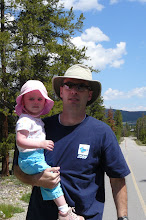Pastoral Theology revisited
Wednesday, September 28, 2005 by niebuhrian
Here is the version of my concept I presented to my class. The language has been cleaned up a little bit, based on some suggestions from you and my own editing. It was well received by the class (all four of us) and the only sticking point which I need to continue to refine is the amount of theological reflection in the process, and the idea of introducing theological thoughts and reflections to the community. For some reason both of the other students in the class had difficulty understanding why this was necessary in a pastoral theological setting. To me, it was common sense that good theology was never done in a vacuum and that ideas, experiences, thoughts and reflections needed to be discussed in a communal setting in order for theology to be real and have a real impact.
Thanks for all of the comments, suggestions and frustrations. It seems like the biggest frustration was that it wasn't practical. Rather than having teeth it theorized about the biting motion, and that was its intention. I was asked to define something that I had practically done for three years. That meant stepping back from the practical work of theology and asking: what, how, and why?
The most frustrating aspect of this assignment for me was its brevity. When using images, it is important to fully conceptualize the picture so that the description can be fully understood, this was difficult to do in a half page. As I continue my studies, I am sure there will be opportunities to flesh out the practical dimensions of this model, as well as, its continued academic applications. It is a theoretical definition, and one that I will continue to work with during my time here.
Thanks for all of the comments, suggestions and frustrations. It seems like the biggest frustration was that it wasn't practical. Rather than having teeth it theorized about the biting motion, and that was its intention. I was asked to define something that I had practically done for three years. That meant stepping back from the practical work of theology and asking: what, how, and why?
The most frustrating aspect of this assignment for me was its brevity. When using images, it is important to fully conceptualize the picture so that the description can be fully understood, this was difficult to do in a half page. As I continue my studies, I am sure there will be opportunities to flesh out the practical dimensions of this model, as well as, its continued academic applications. It is a theoretical definition, and one that I will continue to work with during my time here.
I believe Pastoral Theology is better conceptualized than defined, allowing for a fluid and open approach to theology that has roots in the experiences within and outside its distinct boundaries. Therefore, I offer an image of Pastoral Theology to be played with rather than a definition that might constrict. The image I offer is the helical or coil spring. This type of spring is usually circular, spiraling into three-dimensions with distinct vertical and horizontal components. Furthermore, helical springs generally have gaps between strands of coiled wire giving the sense of both occupied space and openness. Finally, helical springs offer a diverse number of usages and functions.
A visual inspection of Pastoral Theology reveals a vertical, God-human dimension, and an equally important, horizontal, human-human dimension. These two relationships are bound to the image of the spring, by the rising circular coils. Along this spiral I see the work of Pastoral Theology as containing four points of reference: experience, reflection, introduction to the community, and re-interpretation. The gaps between wire strands signify openness to other sources of knowledge and inspiration. Thus, a helical spring model of Pastoral Theology embodies enduring relationships, an ability to incorporate new dimensions into its thought and praxis, and relating its distinctive theological ideas through a process of experience, reflection, introduction, and re-interpretation.
Moreover, helical springs have three mechanical functions: compression, tension, and torsion. The compression function is generally supportive. The tension function flexibly holds independent pieces together. The torsion function operates by coiling and uncoiling to release stored energy. These mechanical functions help us to understand the under-girding functions of Pastoral Theology. Support, intentional binding of distinct disciplines, and the release and retention of knowledge and experiences are the functions from which the work of Pastoral Theology rises.
grace and peace
